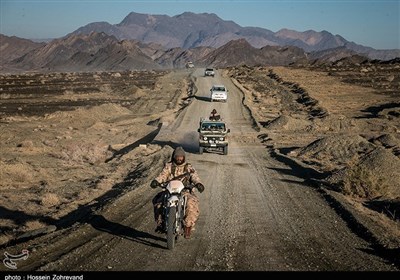Climate Tipping Points Loom As Global Warming Nears Critical Threshold
TEHRAN (Tasnim) – New research warns that surpassing the Paris Agreement's global warming targets could trigger irreversible climate tipping points, with potentially catastrophic consequences.
The world's climate is on the edge, and the direction it will take remains uncertain.
A new model of Earth's climate system indicates that if global warming exceeds the primary goal set by the Paris Agreement, it could trigger a series of tipping points that may be difficult or impossible to reverse.
On the current climate trajectory, the risk of crossing one of four critical tipping points by 2300 could reach 45 percent.
This research comes at a pivotal moment in the climate crisis.
Last year, for the first time, every day exceeded 1°C above pre-industrial levels, bringing the planet perilously close to breaching the Paris Agreement's 1.5°C warming threshold.
Some experts believe that the decisions made in the next few years will determine whether that goal can be achieved, while others argue it was already missed years ago.
The study was conducted by climate scientists Tessa Möller and Annika Ernest Högner from the University of Potsdam in Germany.
It examines four potential points of 'no return'—when parts of the climate system reach a critical threshold, leading to even more severe and rapid climate change.
These include the possible collapses of the Atlantic Ocean's main current system, the Amazon rainforest, the Greenland ice sheet, and the West Antarctic Ice Sheet.
Experts have recently warned that the Atlantic Ocean current system could collapse as soon as 2050.
Moreover, Greenland's melting ice sheet is dangerously close to reaching a point of no return—if it hasn't already.
Biosphere systems like the Amazon rainforest could also drastically alter the climate system. Some scientists believe the rainforest is already emitting more carbon than it absorbs, contributing to global warming rather than mitigating it.
The probability of crossing just one of these thresholds is referred to as the 'tipping risk.'
"We find that tipping risk by 2300 increases with every additional 0.1°C of overshoot above 1.5°C and strongly accelerates for peak warming above 2.0°C," the study's authors note.
While these projections concern the distant future, the actions taken now will shape the outcome. The findings emphasize the importance of adhering to the Paris Agreement and keeping global warming well below 2°C, even if the 1.5°C target is breached.
Should global temperatures exceed the 1.5°C threshold, even temporarily, the consequences may be irreversible.
One tipping point could trigger another, like falling dominoes, and it remains unclear whether these thresholds can be reversed or slowed.
Utilizing a conceptual model that accounts for this complexity, Möller, Högner, and their team assessed the threat of tipping risks in the short term (by 2100), the medium term (until 2300), and the long term (after 50,000 years).
At the current rate of warming, models suggest that by 2300, the tipping risk could reach 45 percent, and in the long term, it could nearly double to 76 percent.
And this is only considering four tipping points.
While the authors acknowledge "considerable uncertainty" in current climate models, they stress the importance of continued efforts to predict the consequences of exceeding climate goals.
"The transient nature of an overshoot might offer a window of opportunity to counteract anthropogenic emissions with rapid interventions and stabilize the ice sheets before tipping is locked in," explains the international research team.
Achieving net-zero greenhouse gas emissions by 2100 will be "paramount to minimize tipping risk in the long term," the team adds.






